
A 'saga' can be described as a long narrative of legendary figures and events of a heroic age — a place, a time, and a person or a people. A major saga of the history of the West is that of Comancheria, the historic region of much of the five states of Kansas, Colorado, Oklahoma, New Mexico and Texas, as well the country of Mexico. The Comanches ruled it for more than twenty decades. No one was in Comancheria without Comanche permission.
Coming out of the Shoshone peoples of Wyoming in the 1600s, the Numunu moved into the southern Plains. 'Comanche' is Ute for "anyone who wants to fight me all the time." They got the horse from the Utes and with it became the "Lords of the Plains," ruling the vast region with a loose-knit network of self-governing bands. Fierce Comanche rule kept much of the region free of permanent settlement.
The iconic story of Comanche and Comancheria history is that of Cynthia Ann Parker, captured at age nine, becoming the wife of War Chief Peta Nocona, and their oldest son, Quanah, who at age 30 led the last band of the Comanches into the reservation at Fort Sill, Oklahoma in 1875. The former nomadic warrior then crossed the cultural chasm, becoming businessman, diplomat, benefactor, and perhaps the primary force in multiple tribes transitioning to the new ways of the white-mans' settlement culture.
A primary component in that transition was Quanah Parker's twelve-room, two-story, 1889 mansion, "Star House," which not only represents the saga, but is itself a saga.
Meet Bob Saul
Bob Saul was raised on a cattle ranch that was originally part of the Lazy F Ranch, founded in 1876 and purchased by Charles Goodnight in 1882 as part of the historic JA/Goodnight ranches in the 'rough-country' caprock canyons of the Texas Panhandle at Quitaque (kit'-ah-kway), Texas. Both his heritage and the region around Bob's boyhood home inspired his love of history. The Saul family settled in Texas south of Nacogdoches in 1821, making Bob a seventh-generation Texan. His great-grandfather rode the Sedalia and Baxter Springs Trail once, the Chisholm Trail three times, and the Great Western Trail three times. His hometown of Quitaque is surrounded by major historic sites, including Los Lingos (Las Lenguas) Canyon, also known as the Valley of Tears, a primary site where Comanche and Kiowa traded with the Comancheros. Some contend this was the place Cynthia Ann Parker was taken after her capture by the Comanches in 1836. Quitaque is also the site of Camp Resolution of the tragic 1841 Texan Santa Fe Expedition.
Bob has served as editor, vice-president, and president of publishing companies in Texas and Tennessee. For 26 years, he maintained a dual career as a consultant in volunteer program management for four national non-profits while he owned and operated a custom software business in New York City. He is currently president of History Partners, Inc. and oooMsgs Inc. as well as president of two nonprofits, MyComancheria Institute and Star House Preservation, Inc. He also serves voluntarily as president of West Texas Trails Association and the event producer of the Lone Star Cowboy Poetry Gathering held every 3rd Fri/Sat in February in Alpine, Texas.
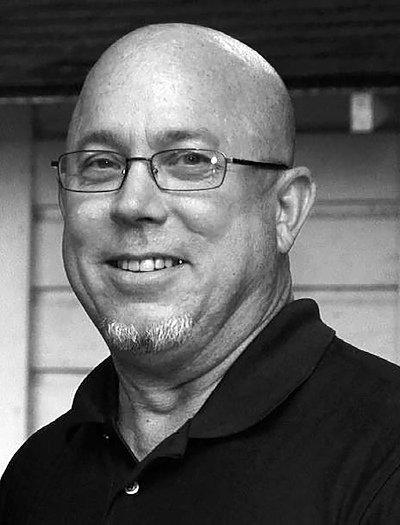
Trammel's Trace: The First Road to Texas from the North is the history of a 200-year-old road and its role in early smuggling and migration into Texas beginning in the early 1800s. Both the trail and its namesake, Nicholas Trammell, are the subject of his research. This award-winning work was published in 2016 by Texas A&M University Press (more at www.trammelstrace.com). Praise for Trammel's Trace has been broad. The president of the Texas Historical Foundation said, "through research, countless presentations to local historical organizations, and one-on-one education of landowners, he has reconnected Trammel's Trace and brought the historic pathway back into current consciousness." As a result of his research and his efforts to educate others about the old road, the Stone Fort Chapter of the Daughters of the Republic of Texas erected a five-foot granite marker for Trammel's Trace in Nacogdoches in 2018.
Meet Gary Pinkerton
Gary Pinkerton has a Master of Social Work (MSW) degree from the University of Houston and a bachelor's degree in social work and psychology from Texas A&M University-Commerce. As an independent researcher and HR consultant, he contributes to diverse projects. He is a member of the Editorial Board for the East Texas Historical Association. His work also appears in the online Encyclopedia of Arkansas History and Culture, the online Handbook of Texas, The Texas Historic Sites Atlas of the Texas Historical Commission, and The Portal to Texas History. His current work is a look at the contraband culture of Spanish East Texas from 1770 through 1813, a period called the "the last Spanish episode of the Texas drama."
His second book, True Believers: Treasure Hunters at Hendricks Lake, is the story of people who believed a Texas treasure legend enough to search for it. Houston oilmen, a Carthage TV repairman, some tough Texas lawmen, and an MIT-educated electrical engineer are just some of the men who believed the treasure legend of Hendricks Lake in east Texas enough to search for silver there. W.C. Jameson, the author of The Lost Canyon of Gold, says, "This book is a compelling history artfully wrought by an excellent writer with an intimate connection to the land and the people." Pinkerton and the legend are featured in the premiere episode of Beyond Oak Island, a new series on The History Channel. The book is available from the author at his website at www.hendrickslake.com.

Texas militia on October 1, 1862, scattered through several counties along the Red River, arresting more than two hundred suspected Unionists. In Gainesville, the seat of Cooke County, vigilantes executed at least forty-two of these men for conspiring to commit treason and foment an insurrection. Few of the victims had plotted to usurp Confederate authority, and most were innocent of abolitionist sentiments, but their pleas made little difference. Others were lynched in nearby counties, but the Great Hanging claimed the most lives in Gainesville, which became the town most closely identified with the atrocity in subsequent accounts. An inquiry into the circumstances surrounding this event offers useful insights into disaffection in the Confederacy. Not only is it the most spectacular of several such events in Civil War Texas, it is also the largest in United States history, and as such it attracted much contemporary notice. For what this event suggests about how the concerns of nineteenth-century Southerners for order and security shaped the course of the Civil War, the Great Hanging deserves as large a modern audience as it reached during the war, when newspaper editors across the country printed reports of the vigilantes in North Texas.
Meet Richard B. McCaslin
Richard B. McCaslin, TSHA Professor of Texas History at the University of North Texas, is the author or editor of eighteen books. These include Tainted Breeze: The Great Hanging at Gainesville, Texas, October 1862, which earned a Tullis Prize and AASLH commendation; Lee in the Shadow of Washington, which won a Laney Prize and Slatten Award and was nominated for a Pulitzer; Fighting Stock: John S. "Rip" Ford of Texas, which got a Pate Award and Bates Award; At the Heart of Texas: One Hundred Years of the Texas State Historical Association, 1897-1997, which won an Award of Merit from the Texas Philosophical Society, and Saratoga on the Cibolo: Sutherland Springs, Texas, which received a Publication Award from the San Antonio Conservation Society. His Tennessee volume for the Portraits of Conflict series earned the Douglas Southall Freeman Award, and the series received an AASLH commendation. A Fellow of the Texas State Historical Association and Admiral in the Texas Navy, he also has commendations from the Civil War Round Tables in Dallas, Fort Worth, and Shreveport for his academic work on the Civil War era.
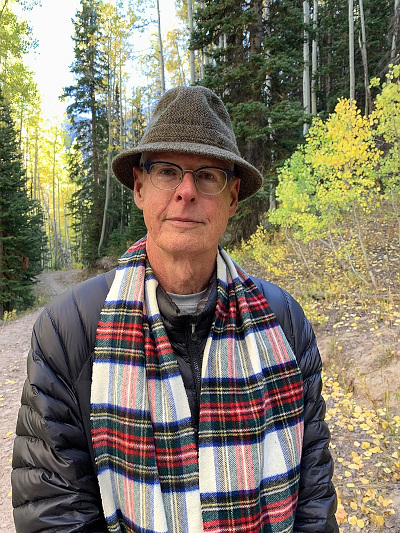
On a sweltering August night in 1876, Methodist minister William England, his wife, Selena, and two of her children were brutally slaughtered in their North Texas home. Acting on Selena's deathbed testimony, a neighbor, his brother-in-law, and a friend were arrested and tried for the murders. Murder in Montague tells the story of this gruesome crime and its murky aftermath. In this engrossing blend of true crime reporting, social drama, and legal history, author Glen Sample Ely presents a vivid snapshot of frontier justice and retribution in Texas following the Civil War.
The sheer brutality of the Montague murders terrified settlers already traumatized by decades of chaos, violence, and fear—from the deadly raids of Comanche and Kiowa Indians to the terrors of vigilantes, lynchings, and Reconstruction lawlessness. But the crime's aftermath—involving five Texas governors, five trials at Montague and Gainesville, five appeals to the Texas Court of Appeals, and three life sentences at hard labor in the state's abominable and inhumane prison system—offered little in the way of reassurance or resolution.
Viewed from any perspective, the 1876 England family murders were both a human tragedy and a miscarriage of justice. Combining the long view of history and the intimate detail of true crime reporting, Murder in Montague deftly captures this moment of reckoning in the story of Texas, as vigilante justice grudgingly gave way to an established system of law and order.
Meet Glen Sample Ely
Glen Sample Ely is the award-winning author of The Texas Frontier and the Butterfield Overland Mail, 1858-1861 (University of Oklahoma Press, 2016) and Where the West Begins: Debating Texas Identity (Texas Tech University Press, 2011) which received sixteen honors and awards combined. His third book, Murder in Montague: Frontier Justice and Retribution in Texas (University of Oklahoma Press, 2020) won the Lowman Memorial Book Prize from the Texas State Historical Association. He is co-author of Confederates and Comancheros: Skullduggery and Double-Dealing in the Texas-New Mexico Borderlands (University of Oklahoma Press, 2021). Ely earned his Ph.D. from TCU. His work has won the Award of Excellence in Preserving History from the Texas Historical Commission as well as Gold and Silver Wilder Awards from the Texas Association of Museums. In 2018 Ely was inducted as a Fellow in the Texas State Historical Association.

The five current states of the Panhandle-Plains region (Texas, Kansas, Oklahoma, Colorado, and New Mexico) all saw events that came to a head in the Red River War. For over 30 years conflicts between Euro-Americans and Comanches, Kiowas, Cheyennes, and Arapahos--from the Fort Parker massacre in central Texas in 1836 to the Sand Creek massacre in southern Colorado in 1864—occurred across the Southern Plains. With the Treaty of Medicine Lodge Creek in 1867, Southern Plains tribes ostensibly agreed to move onto reservations in western Indian Territory (today's western Oklahoma). But raiding and tragedy continued in Indian Territory, Texas, and Kansas. The second Battle of Adobe Walls in June 1874 resulted from the violation of the Medicine Lodge Treaty by buffalo hunters and merchants operating south of the Arkansas River. Indian depredations in Texas continued to occur. Finally, in 1874 the U. S. Army launched a five-pronged strategy to force Southern Plains tribes permanently onto their reservations. This strategy became known as the Red River War.
The first battle of the Red River War happened on 30 August 1874, when troops of the 6th Cavalry and 5th Infantry commanded by Colonel Nelson A. Miles fought Indians in lower Palo Duro Canyon at the Battle of Red River. Numerous skirmishes and battles took place from September through November 1874. The critical battle of the War took place on 28 September 1874 when the Colonel Ranald S. Mackenzie-led 4th Cavalry destroyed at least five Indian villages in upper Palo Duro Canyon at the Battle of Palo Duro Canyon.
In June 1875 the last Indian combatants—under Quanah—surrendered at Fort Sill, Indian Territory. Over 70 Indians were imprisoned at Fort Marion, Florida, from 1875 to 1878 for their actions in the Red River War.
This discussion will include all factors leading up to and including the Red River War, especially the critical second Battle of Adobe Walls and its consequences.
Meet Michael R. Grauer
Michael R. Grauer is the McCasland Chair of Cowboy Culture/Curator of Cowboy Collections and Western Art at the National Cowboy & Western Heritage Museum in Oklahoma City, Oklahoma.
A Kansas native, Mr. Grauer holds a Bachelor of Fine Arts in painting and a Bachelor of Fine Arts in art history from the University of Kansas; the Master of Arts in art history from Southern Methodist University; and the Master of Arts in history from West Texas A&M University. He was the University of Kansas Kress Foundation Department of Art History's distinguished alumnus for 2012. He worked at the Smithsonian American Art Museum, before becoming curator of art and Western heritage and associate director for curatorial affairs at the Panhandle-Plains Historical Museum, Canyon, Texas, from 1987 to 2018. He was also Adjunct Lecturer in Western American Studies at West Texas A&M University. He joined the National Cowboy & Western Heritage Museum in Oklahoma City in September 2018. He has curated over 150 exhibitions on Western art, culture, and history and authored 65 publications, including The Dictionary of Texas Artists, 1700-1945, Rounded Up in Glory: Frank Reaugh, Texas Renaissance Man, and Making a Hand: The Art of H. D. Bugbee, which received the Western History Association Wrangler Award for Best Western Art Book for 2020. Mr. Grauer lectures on art, history, and culture across the American West. He does a living history cowboy presentation called "Cowboy Mike."
He serves as president of the Western Cattle Trail Association; vice-president of the International Chisholm Trail Association; on the boards of the Kansas Cowboy Hall of Fame, the National Drovers Hall of Fame; is a member of the research committee for the National Cowgirl Hall of Fame in Fort Worth; on the Charles M. Russell catalogue raisonne committee, and is a board member and on the executive committee for Westerners International.
He and his wife, Leslie Baker, live in Oklahoma City. He has three children, Matthew (33), Hannah (26), and Sarah (22), and four grandchildren, Otto, Ezra, Red, and Eloise Rae.

This long-forgotten trek through the Sea of Mud was a major factor in Mexico's eventual loss of Texas. There were still about 4,000 Mexican troops in Texas, other than those killed or captured at San Jacinto, and the final result of the Texas Revolution was far from determined. After the Mexican army was able to extract itself from the mud of what is now Wharton County, there was no realistic chance of the Mexicans regrouping and going on the offensive.
Meet Gregg Dimmick
Gregg Dimmick, MD is a retired pediatrician who previously worked at South Texas Medical Clinics in Wharton, Texas for 37 years. He is a 1974 graduate of Texas A&M University and a 1977 graduate of the University of Nebraska Medical School. Dr. Dimmick is an avocational archaeologist and has coauthored two archaeological reports on excavations of the retreating Mexican army of 1836. He has participated in archaeological digs at the Fannin battle site as well as the San Jacinto battlefield.
Dimmick has written Sea of Mud: The Retreat of the Mexican Army After San Jacinto, An Archaeological Investigation. His book was published in 2004 by the Texas State Historical Association. The second edition was released in paperback in 2006. He has also edited a book that was written by Mexican General Vicente Filisola in 1838. The book has been translated into English by John Wheat and is entitled General Vicente Filisola's Analysis of José Urrea's Military Diary: A Forgotten 1838 Publication by an Eyewitness to the Texas Revolution.
In January of 2011 Dimmick was honored to have been inducted as a national honorary member of the Sons of the Republic of Texas. In Feb. of 2020 Dimmick was honored with the Daughters of the American Revolution award for history preservation. Dr. Dimmick has appeared on the History Channel and the Discovery Channel in relation to his work on the archaeology of the Mexican army. He has spoken at various conferences on Texas history including the San Jacinto Conference, the DRT's conference at the Alamo, the Alamo Society, and the Texas Philosophical Society. Dimmick has served for several years on the board of directors and as chairman of the archeology committee for the San Jacinto Battleground Conservancy. After retirement Dimmick has volunteered in archeological digs at Roman sites in Germany, York England, and the Vindolanda Fort in England.
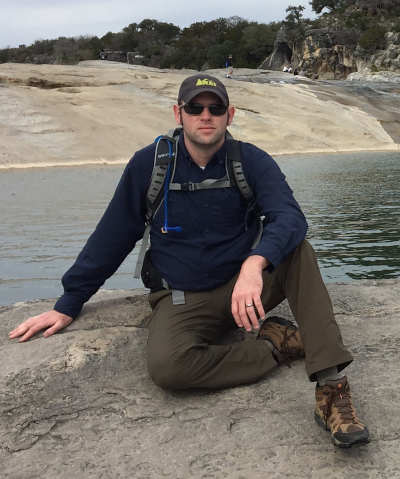
For almost twenty years the Bents were one of the most powerful families in the southern plains and Southwest borderlands. From an adobe trading post on the Arkansas River and mercantile establishments in Taos and Santa Fe, their company engaged in the bison robe and fur trades, business on the Santa Fe Trail, and more shadowy enterprises like liquor trading and smuggling. Traditionally celebrated as rugged individualists and forerunners of Manifest Destiny, the Bent brothers were, in reality, heavily reliant on the family ties they forged across racial and cultural lines. Alliances with the Southern Cheyennes and New Mexican federalists were essential to family's success in the region. Simultaneously, however, the success the Bents experienced laid the groundwork for the violence and chaos that upended their business in the late 1840s. Ironically, American expansion dealt the final blow to the fortunes of Bent, St. Vrain and Company.
Meet David Beyreis
David Beyreis is a historian of the Great Plains and North American borderlands, and a member of the Fort Worth Westerners. He is the author of Blood in the Borderlands: Conflict, Kinship, and the Bent Family, 1821-1920 and articles in Montana: The Magazine of Western History, Kansas History, and The Journal of the Early Republic. His work has received a Wrangler Western Heritage Award from the National Cowboy Museum and Western Heritage Museum and was a finalist for the Western Writers of America's Spur Award. His current research focuses on intercultural diplomacy on the northern plains during the nineteenth century. He received his PhD from the University of Oklahoma and currently teaches history at Ursuline Academy of Dallas.
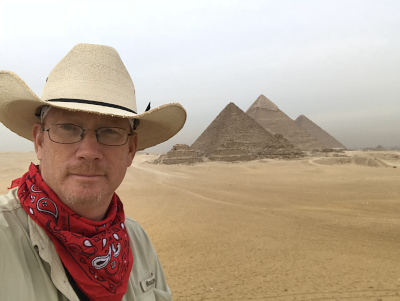
The US Army Camel Experiment is an award-winning mini-documentary that has been shown at international conferences in the UK and Kazakhstan, has over 22,000 views on YouTube, and is shown at historical sites across Texas and the Southwest. Director Doug Baum made the film in 2012 with footage shot on a 2009, 150th-anniversary reenactment of the 1859 Echols Expedition in West Texas. The film contextualizes the 19th-century US military experiment and answers the question, "What ever became of the camels?" After showing his film, Baum will be discussing in greater detail this quirky bit of history and taking questions.
Meet Doug Baum
Doug Baum has been the owner of Texas Camel Corps since 1997. Texas Camel Corps was named for and predicated on the 19th century use of camels as military pack animals in the desert Southwest. Today's business activities include public education programs about this quirky bit of history with an annual calendar of events that includes clients such as the Texas Historical Commission, US National Park Service, schools, libraries, museums, and historical sites across Texas, Arizona, New Mexico, and Mississippi. In addition, Baum is an award-winning documentary filmmaker and also leads international tours in Egypt, Jordan, India, Morocco, and Kenya. Most recently he has been hired as a tourism consultant by the government of the Kingdom of Saudi Arabia.

The pre-revolutionary interaction between indigenous peoples and African Americans is much more extensive than originally thought. Many events such as the need for males for husbands as a result of extensive warefare, laws among the French held territories allowing freedom for Afro-Indian children and other pressures created large areas of cooperation and integration. There was no one perspective among the over 535 now-registered tribes on interaction between the groups and responses varied dramatically depending upon many factors such as economics, location, culture, and historical events.
Post-Revolutionary war and leading up to the Civil War relations among the groups begins to change as some Indigenous people begin to lose lands and face extreme backlash for support of African Americans. Post-Civil War and through the Civil Rights Era the African American groups begin to disassociate from Indigenous groups. These divisions continue into our modern sense of identity and historical issues facing our society today.
Meet Lisa Uhlir
Dr. Uhlir is one of those individuals who love learning and would stay in school forever just studying if she could. This is most likely why her multiple degrees range from chemistry to Russian studies, to economics and political philosophy. Her original goal was to be a spy but the end of the Cold War and the Clinton hiring freeze on embedded spies halted that dream mid-hiring process with the CIA. Dr. Uhlir grew up in Northern Michigan and is an Ojibwa Native American from the Sugar Island Band. She has taught locally at UTA and UNT, and currently is a full tenured professor at TCC. She frequently speaks on issues from Native Boarding schools to Native healing.
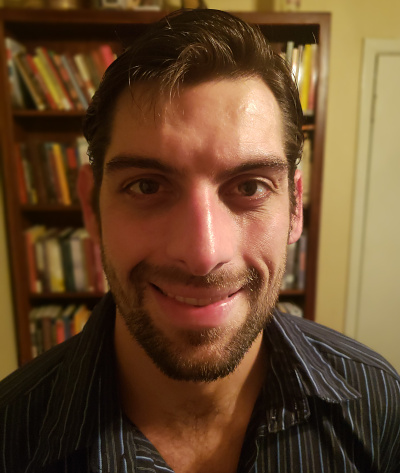
Texas has had a complicated history with the sea. Though images of cattle drives, and oil wells dominate popular understandings of Texas, maritime trade and travel have been pivotal features in the development of Texas as a territory, nation, and state. By the end of the nineteenth century, Galveston was one of the most developed cities in the South, and the third busiest port in the United States. Galveston became one of the primary points of entry into Texas, with an intricate metropolitan environment.
This program explores some of the maritime connections that complicate Texas, highlighting the impact of the Atlantic world on our shared past. Sailors from across the world entered Texas society. Often dismissed as dirty and poorly educated, these maritime workers nevertheless shaped the contours of Texas port cities. The transition from sailing ship to steam ships changed the way that Texans looked at their own borders and port cities. As these ports grew in importance, they drew more attention from contemporary observers and actors who had to balance the demands of an increasingly industrialized state economy with Texas cultural traditionalism.
Meet Kevin Grubbs
Kevin Grubbs is a PhD candidate at the University of Southern Mississippi. He works at the Fort Worth Log Cabin Village and teaches at Tarrant County College. His dissertation explores the lives of sailors along the Gulf Coast during the transition from sail to steam in the late nineteenth century. He has been published in the Journal of Mississippi History and presented on maritime history and the history of slavery.
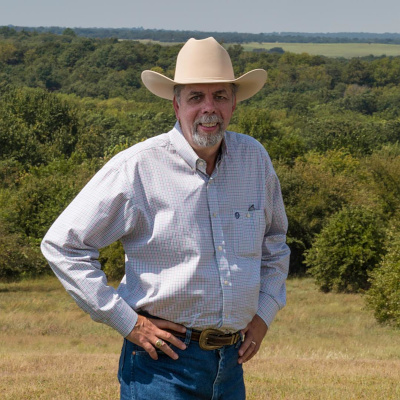
According to the popular modern narrative, Texas cattlemen drove cattle herds from Texas to Kansas up the legendary Chisholm Trail. This trail originated in San Antonio, Texas. Or Brownsville, or Cuero, or Fort Worth, or Kingsville, or several other claimed origins, depending on who tells the story; no one seems to know for sure. Recently-discovered General Land Office surveys document the exact location of the famous Chisholm Trail during its peak years of use as a cattle trail. Did the Chisholm Trail really pass through Fort Worth? Fort Worth Westerners member Wayne Ludwig will address these questions.
Meet Wayne Ludwig
Wayne Ludwig is a Fort Worth native, cattle trails historian, and author of The Old Chisholm Trail: From Cow Path to Tourist Stop (Texas A&M University Press, 2018). He created the Texas Cattle Trails History Group on Facebook and is a member of Western Writers of America, Academy of Western Artists, and Old Trail Drivers Association of Texas. The Old Chisholm Trail was awarded the Elmer Kelton Book of the Year award by the Academy of Western Artists. The book was also named a Finalist for 2018 Most Significant Scholarly Book by the Texas Institute of Letters. Wayne has been a guest speaker at various symposiums and historical association events and instructor for TCU Silver Frogs extended education.
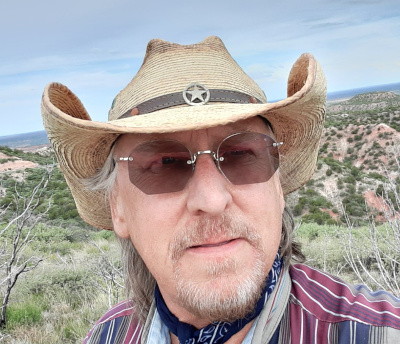
Tom Ashmore will discuss the history of Horsehead Crossing on the Pecos River which served the Butterfield Stage Line and the Goodnight–Loving Cattle Trail. Horsehead Crossing is a ford on the Pecos River in Pecos County, south of Odessa, Texas. Historically, it was a major landmark on the trail west as one of a few fordable sections of the Pecos in West Texas, and as the first reliable source of water for about 75 miles on the route from the east.
Meet Tom Ashmore
Tom Ashmore spent 21 years in the Air Force as a special intelligence analyst. After retiring as an analyst, he worked as a contractor teaching intelligence skills for the Air Force Intelligence School for 20 years at Goodfellow AFB, Texas. As a member of the Concho Valley and Iraan Archeological Societies, he headed up archeological investigations of Butterfield's Overland Mail's Johnson's Station in Irion County, Grape Creek Station in Coke County and Horsehead Crossing Station in Crane County. He also headed up investigations of Paint Rock 1800s Historic Camp Sites in Concho County, Tower Hill Military Lookout in Sterling County and ancient rock shelters in the Lower Pecos region of Texas. He completed a book in 2019 on his Butterfield Trail investigations, The Butterfield Trail Through the Concho Valley and West Texas. He is a member of the Iraan Archeological Society and Texas Archeological Society and has written numerous reports for the Southwest Federation of Archeological Societies.